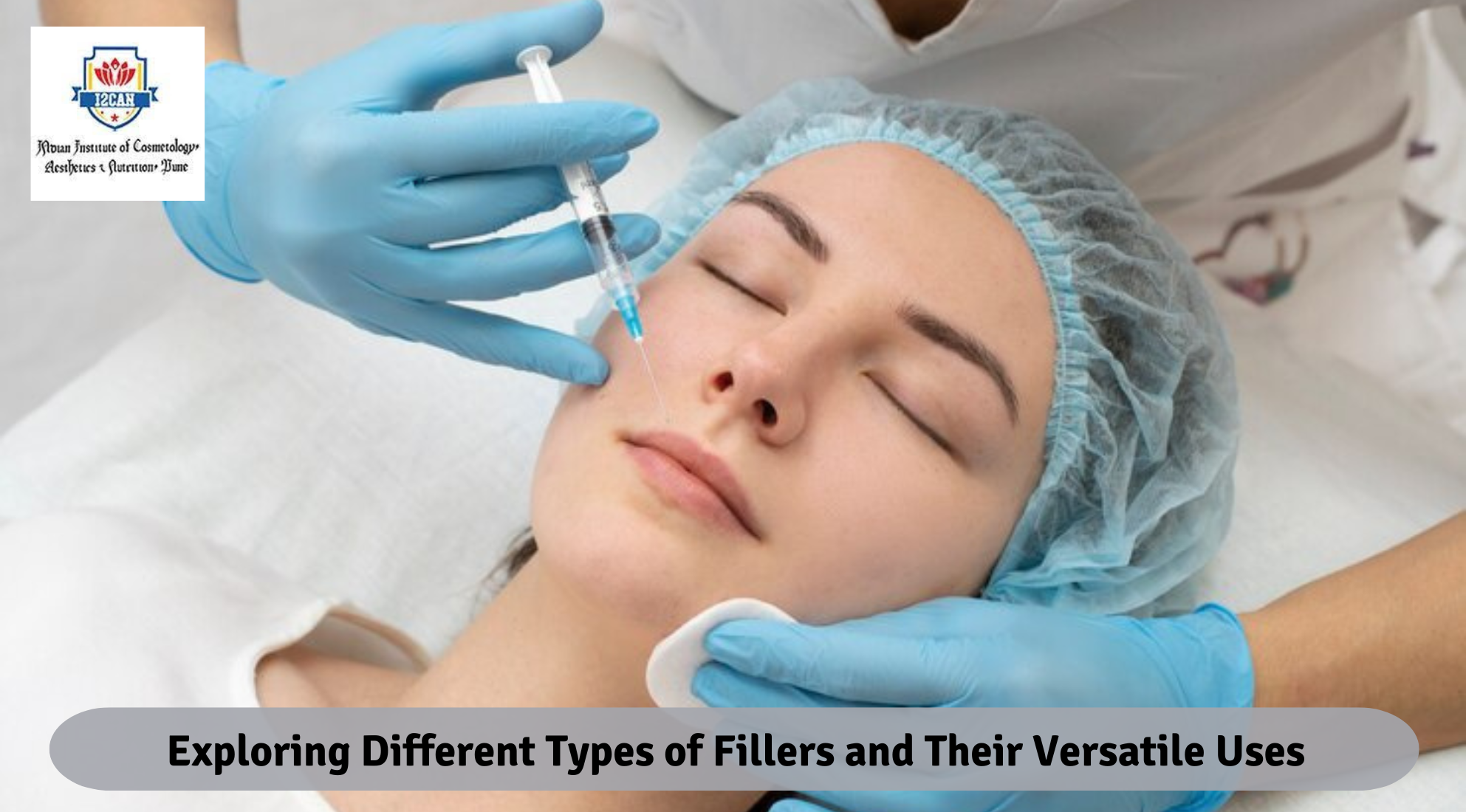In the world of cosmetic procedures, fillers have revolutionized the way we approach facial rejuvenation and enhancement. These injectable substances offer a versatile solution for addressing various concerns, from smoothing wrinkles to restoring volume. In this comprehensive guide, we’ll delve into the different types of fillers available in the market, their unique characteristics, and the diverse range of applications they offer in the field of cosmetology.
- Hyaluronic Acid Fillers:Hyaluronic acid (HA) fillers are among the most popular choices in cosmetic procedures due to their natural compatibility with the body and versatility in addressing multiple concerns. HA is a substance found naturally in the skin, joints, and connective tissues, making it well-tolerated and biodegradable.
- Characteristics: HA fillers come in varying densities, allowing for tailored treatments based on the depth of wrinkles or volume loss. They provide hydration to the skin, resulting in a plumping effect and improved overall texture.
- Versatile Uses: HA fillers are commonly used to smooth lines and wrinkles, enhance lip volume, sculpt facial contours, and restore lost volume in areas such as the cheeks and temples.
- Calcium Hydroxylapatite Fillers:Calcium hydroxylapatite (CaHA) fillers offer a unique blend of longevity and natural results. CaHA is a mineral-like compound found in bones and teeth, making it biocompatible and durable.
- Characteristics: CaHA fillers stimulate collagen production, leading to gradual improvement in skin quality and texture over time. They are thicker in consistency, making them suitable for deeper wrinkles and volume restoration.
- Versatile Uses: CaHA fillers are ideal for filling deeper lines and folds, such as nasolabial folds and marionette lines, as well as augmenting chin and jawline contours.
- Poly-L-Lactic Acid Fillers:Poly-L-lactic acid (PLLA) fillers offer a unique approach to facial rejuvenation by stimulating the body’s natural collagen production. PLLA is a biodegradable synthetic substance that gradually breaks down in the body, leaving behind a framework of collagen fibers.
- Characteristics: PLLA fillers provide subtle, gradual results that emerge over several months as collagen production increases. They are ideal for treating volume loss and restoring youthful facial contours.
- Versatile Uses: PLLA fillers are commonly used to address age-related volume loss in areas such as the cheeks, temples, and midface, as well as improving skin laxity and texture.
- Polymethylmethacrylate Fillers:Polymethylmethacrylate (PMMA) fillers offer a semi-permanent solution for facial augmentation and contouring. PMMA microspheres are suspended in a collagen or hyaluronic acid gel, providing immediate volume and stimulating collagen production over time.
- Characteristics: PMMA fillers offer long-lasting results, making them suitable for patients seeking a more permanent enhancement. They provide structural support and can be used for precise sculpting of facial features.
- Versatile Uses: PMMA fillers are often used for augmenting cheekbones, chin, and jawline, as well as correcting asymmetries and enhancing facial proportions.
Conclusion:
In the realm of cosmetic procedures, fillers have emerged as indispensable tools for achieving natural-looking rejuvenation and enhancement. From hyaluronic acid to calcium hydroxylapatite, each type of filler offers unique characteristics and versatile uses in addressing various concerns. By understanding the differences between these fillers and their respective applications, cosmetic practitioners can tailor treatments to meet the individual needs and preferences of their patients, ultimately enhancing their overall satisfaction and confidence.

